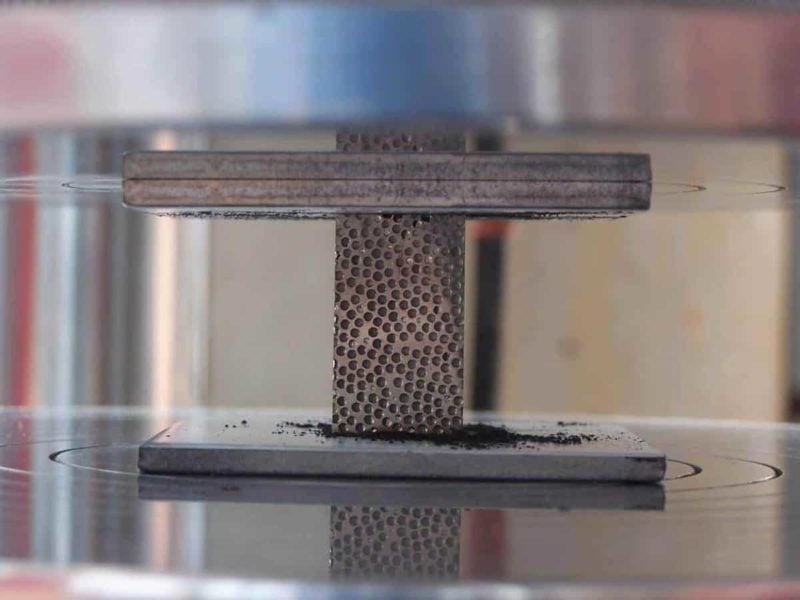Research from North Carolina State University shows that lightweight composite metal foams are effective at blocking X-rays, gamma rays and neutron radiation, and are capable of absorbing the energy of high impact collisions. The finding means the metal foams hold promise for use in nuclear safety, space exploration and medical technology applications.
“This work means there’s an opportunity to use composite metal foam to develop safer systems for transporting nuclear waste, more efficient designs for spacecraft and nuclear structures, and new shielding for use in CT scanners,” says Afsaneh Rabiei, a professor of mechanical and aerospace engineering at NC State and corresponding author of a paper on the work.
Rabiei first developed the strong, lightweight metal foam for use in transportation and military applications. But she wanted to determine whether the foam could be used for nuclear or space exploration applications – could it provide structural support, protect against high impacts and provide shielding against various forms of radiation?
To that end, she and her colleagues conducted multiple tests to see how effective it was at blocking X-rays, gamma rays and neutron radiation. She then compared the material’s performance to the performance of bulk materials that are currently used in shielding applications. The comparison was made using samples of the same “areal” density – meaning that each sample had the same weight, but varied in volume.
The most effective composite metal foam against all three forms of radiation is called “high-Z steel-steel” and was made up largely of stainless steel, but incorporated a small amount of tungsten. However, the structure of the high-Z foam was modified so that the composite foam that included tungsten was not denser than metal foam made entirely of stainless steel.
The researchers tested shielding performance against several kinds of gamma ray radiation. Different source materials produce gamma rays with different energies. For example, cesium and cobalt emit higher-energy gamma rays, while barium and americium emit lower-energy gamma rays.
The researchers found that the high-Z foam was comparable to bulk materials at blocking high-energy gamma rays, but was much better than bulk materials – even bulk steel – at blocking low-energy gamma rays.
Similarly, the high-Z foam outperformed other materials at blocking neutron radiation.
The high-Z foam performed better than most materials at blocking X-rays, but was not quite as effective as lead.
“However, we are working to modify the composition of the metal foam to be even more effective than lead at blocking X-rays – and our early results are promising,” Rabiei says. “And our foams have the advantage of being non-toxic, which means that they are easier to manufacture and recycle. In addition, the extraordinary mechanical and thermal properties of composite metal foams, and their energy absorption capabilities, make the material a good candidate for various nuclear structural applications.”
If our reporting has informed or inspired you, please consider making a donation. Every contribution, no matter the size, empowers us to continue delivering accurate, engaging, and trustworthy science and medical news. Independent journalism requires time, effort, and resources—your support ensures we can keep uncovering the stories that matter most to you.
Join us in making knowledge accessible and impactful. Thank you for standing with us!

